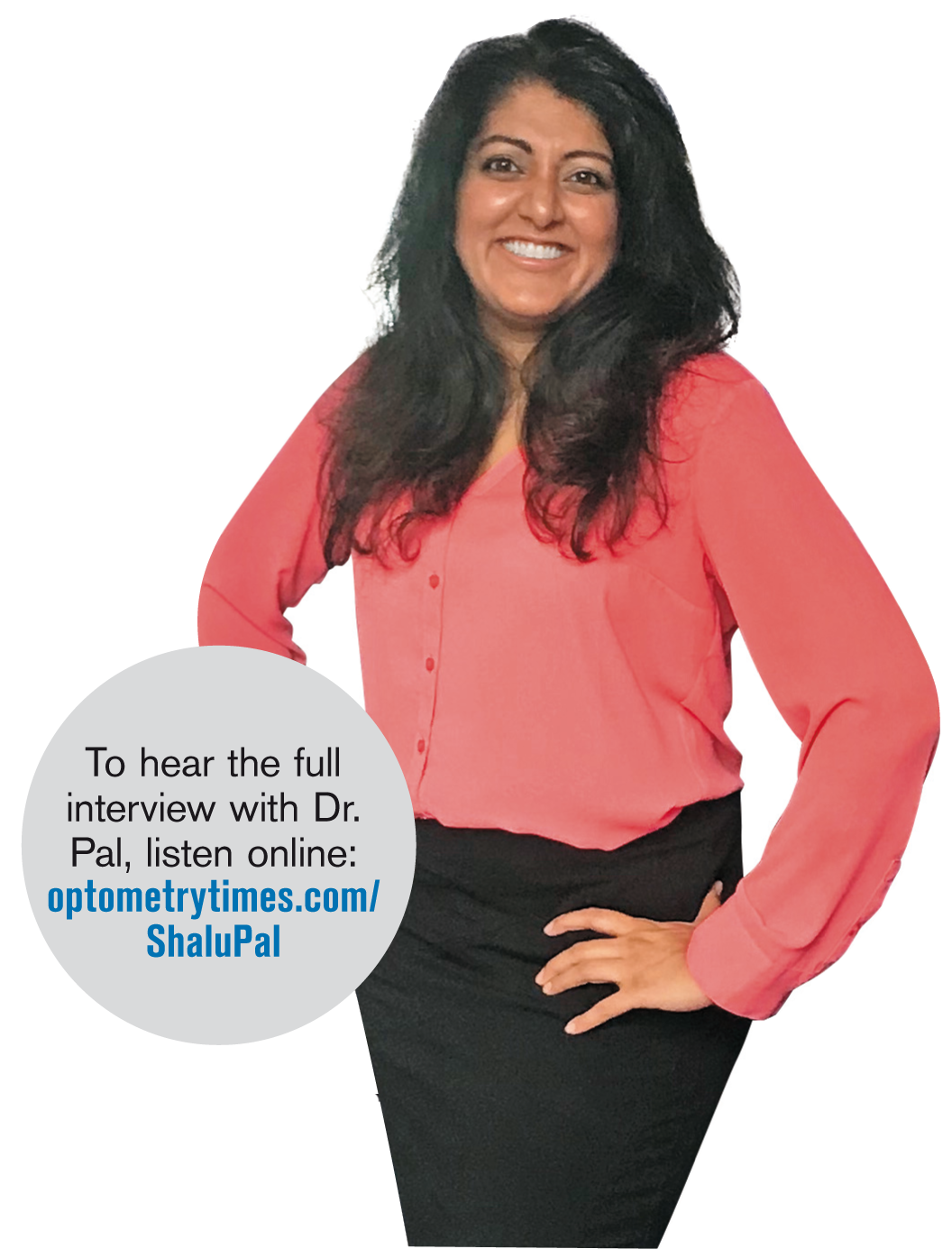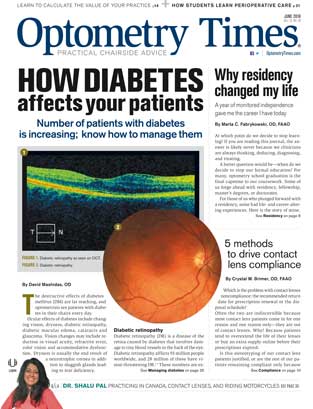Shalu Pal, OD, FAAO-Toronto, Ontario, Canada
Shalu Pal, OD, FAAO, discusses practicing in Canada, contact lenses, and riding motorcycles in the latest Optometry Times Q&A.


Where did you grow up?
I grew up in St. John, New Brunswick, on the east coast of Canada. My mom was a nurse, and my dad is a civil engineer. I always wanted to be a math teacher, and my parents had desires for me to become a doctor. So I did a math degree, but to make them happy I also did a biology degree. I didn’t have a faculty member who could answer the question of what I was going to do with my math degree other than teach. So I looked at my biology degree, shadowed a lot of medical professionals, and spent a day with my optometrist. He loved his job, and he loved his life. I said “You’re happy. I want to do what you do because I want to be happy in life.”
What got you into contact lenses?
At Southern California College of Optometry, Dr. Sunny Sanders worked with prosthetics, and I loved what she was doing. So, I went in on weekends to spend time with her, and I saw the impact she had on her patients. I hung out more with my faculty members who were strong in contact lenses, and the passion grew.
Why are you interested in gas permeable (GP) contact lenses?
Because of how they can transform vision. When patients are unable to get good correction with glasses and surgery is their only option, they are able to achieve better results with a gas permeable lens. We reshape the cornea by putting on this hard piece of plastic, and we can completely transform the optics, saving someone from needing a corneal transplant. So, for someone post-surgery or post-trauma or with corneal disease who has been told, “There’s not much we can do”- gas perms can change his life.
Previous OD Q&A: Jeffrey J. Walline, OD, PhD
How does practicing in Canada differ from the U.S.?
Billing is the big difference. I think it’s much simpler up here because we don’t have as many insurance difficulties. Most of our billing is direct billing to the patient, so it’s easier. From an optometry standpoint, we can do the exact same things as ODs in the U.S.
What keeps you in private practice instead of going into academia or industry?
Lecturing and working with students helps me to keep on top of materials which I bring back to the practice to help my patients. I bring my clinical experience into my speaking engagements to for a real-world perspective to share what is happening clinically. So, I think having a bit of both complements each other.
What’s something your colleagues don’t know about you?
Years ago, my dad used to have a motorcycle. One day, I was on the bike of friend and I tapped his shoulder and said “I want you to know the next time we go out riding together, I’m going to be driving.” He laughed at me. I started taking lessons the next weekend, and I was hooked. It was the thrill of learning something new after residency. Being out on the road is liberating. Right now I’m riding a Suzuki GSX-R750. It’s fast enough, it’s big enough, it does everything I need it to do.
What inspired you to get involved with leadership?
During my first week of optometry school, students who were heavily involved approached me about becoming American Optometric Student Association (AOSA) Trustee-elect. One of my biggest influences was Dr. Harue Marsden, who was a big advocate for being involved and advocating for our profession. She showed me how much we can achieve when we work together and the benefits of giving back to the profession. So, I continued to stay involved even after I graduated and after I moved back to Canada; I still remain involved with U.S. associations.
What do you advise OD students wanting to get involved in leadership?
We can each give something back to the profession. You can contribute in many ways; it doesn’t need to be financial or time, those are two different approaches. It can also give you so much back in terms of networking and helping to protect what the people before us created us. Say “yes” to different opportunities, but realize the value of why we should give back and why we are helping to secure our future. There are many different levels that you can get involved in-local, state, or national level, and provincial or national level in Canada. Give back in any way you can to help make the workload easier by having more people contribute.
Why did you move back to Canada?
That was a really hard decision. A lot of Canadian students studying in the U.S. go through same struggle; they need to decide whether they want to stay in the U.S. or come back. “I have a lot of connections in the U.S. Do I stay or come back?” But it came to beyond my career-what’s going to make me happy? And thinking about it, I knew I needed to be close to my family. I knew I wanted to live close to water. I knew I wanted to be close to an airport because I love to travel. I tried to bring my parents to California, but they wouldn’t budge. You get tired of missing all the birthdays and hearing things on the phone instead of being there in person. I knew it was time to go back. I knew that with the foundation I had in optometry, I was going to be able to set up something no matter where I went.
Related Q&A: Viola Kanevsky, OD: Owner of Acuity, NYC
What are the three best practices of an optometry practice?
Number one is always do what’s best for the patient. When I make my recommendations, I’m not thinking about how it’s going to impact me or how it’s going to impact my practice. I’m not thinking about costs; I’m thinking about based on everything I’ve learned about you, what is the right thing to do? Number two is good customer service-I have filled my practice with the happiest people that you can think of. We enjoy coming to work, and that’s important. Third is I do everything honestly and ethically. I’m never trying to cheat anyone, I’m always transparent. Patients know that we’re happy at what we do, we’re doing things in their best interests, and I’m never trying to cheat them in terms of costs and procedures.
Do you have any regrets?
No. I don’t. Have I made mistakes? Yeah, I’ve made mistakes. But I’ve learned from those, and I don’t look back on my life and think, “I should have done this differently or wish I hadn’t done that.”
What is your guilty pleasure food?
I’m a salty person. Sour cream and onion chips with old cheddar cheese. That combination sounds crazy, but it is so good. [Laughs]
What’s the craziest thing you’ve ever done?
Last January, I finally took a vacation. Two friends were getting married in Jamaica, and while I was there we went cliff diving. The adventure park has a series of little jumps, and we felt great that we did them. The highest was about 10 feet. The guide came to the last jump, we looked down, oh no! My friends said I had to do it first, but I wasn’t sure. A relative of the bride or groom was with us, he was about age 65, he just ran and jumped. I looked at my friends, said “OK,” and just did it. It was scary, but I felt incredible after I did it.

Newsletter
Want more insights like this? Subscribe to Optometry Times and get clinical pearls and practice tips delivered straight to your inbox.